P-N Junction as a Rectifier
P-N Junction as a Rectifier: Overview
This topic covers concepts, such as, Rectifier, p-n Junction Diode as a Rectifier, Derivation of Efficiency of Half Wave Rectifier & Derivation of Efficiency of Full Wave Rectifier etc.
Important Questions on P-N Junction as a Rectifier
What is ideal ripple factor and efficiency of half-wave rectifier derive?
Why full wave rectifier is efficient than half wave rectifier?
What is difference between half wave and full wave rectifier?
If a half-wave rectified voltage is fed to a load resistor, which part of a cycle the load current will flow?
A rectifier is an electrical component that converts alternating current (AC) to direct current (DC).
For the given circuit shown in adjoining figure, to act as full wave rectifier. The input should be connected across _________ and the output would appear across ___________and_______:
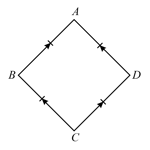
In full-wave rectification, if the input frequency is , the output frequency is _____ .
With the help of neat circuit diagram explain the working of half and full wave rectifier.
Draw the figure of full wave rectifier used to change ac to dc and explain its working.
If the RMS value of sinusoidal input to a full wave rectifier is , then the RMS value of the rectifier's output is
In a half wave rectifier the AC input source of frequency 50 Hz is used. The fundamental frequency of the output is
In the circuit shown the diode will conduct current for a
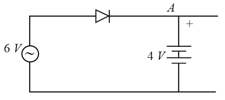
In the diagram, the input is across the terminals A and C and the output is across the terminals B and D, then the output is
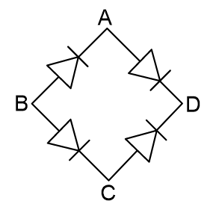
In the diagram, the input is across the terminals A and C and the output is across the terminals B and D, then the output is
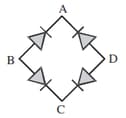
A sinusoidal voltage of peak value 200 volt is connected to a diode and resistor in the circuit figure, so that halfwave rectification occurs. If the forward resistance of the diode is negligible compared to , the RMS voltage (in volt) across is approximately
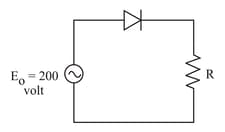
The maximum efficiency of full wave rectifier is
